![]()
|
William
Hudson (& Co) |
Location and period of operation:
|
William Hudson |
Longton |
1889 |
1941 |
|
China manufacturer at the Alma Works (c.1889-1892) and then at the Sutherland Pottery (c.1892-1941), Longton, Stoke-on-Trent, England. Note: Not to be confused with the unrelated company William Hudson & Son at the Gladstone Pottery, Stafford Street, Longton.
|
Formerly: Middleton & Hudson (1870-1889) at the Alma Works.
Subsequently: Hudson & Middleton (1941+) at the Sutherland Pottery.
![]() on the development of Middleton & Hudson
on the development of Middleton & Hudson
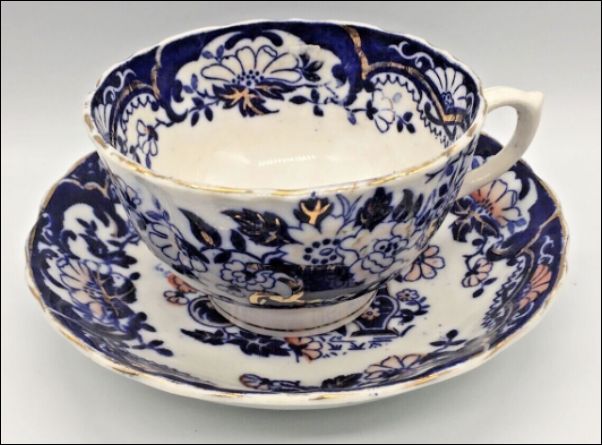 cup & saucer with cobalt blue pattern - hand coloured accents to flowers and gilt banding |
although
there is no makers mark the registration
number 251169 shows that the design/pattern was registered by |
|
W. Hudson produced a range of ware in this popular pattern - Imari pattern - |
round
band with crown on top 1892-1912
|
|
- Imari pattern - |
1892-1912 some of these plates have the 'Art' mark and some have the bottom mark with the cup in the centre
|
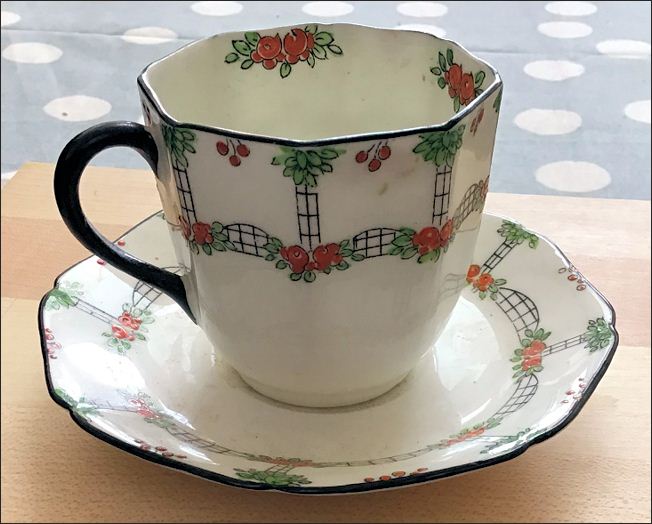 art deco style cup & saucer with hand coloured accents to flowers |
c. 1912-41 |
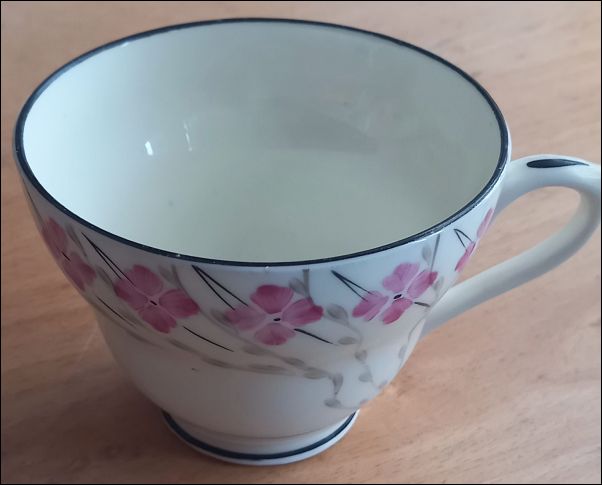 cup with hand painted flowers |
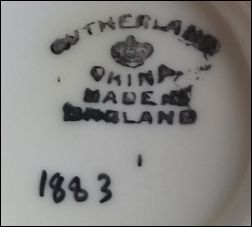
Sutherland China Made in England c. 1912-41 the hand painted number 1883 is likely to be a pattern number it is known that this is from a tea set which was given as a wedding gift in 1941 and so the pattern is likely to be from the 1930s+ |
photos courtesy: Moore Dunbar
Marks used on ware for identification:
|
Note:
|
W. H.
early marks (1889-92) had the
initials W.H. on printed marks
of various designs
|
round
band with crown on top 1892-1912
|
round band with crown on top |
|
The mark on the left is shown in Godden's Encyclopaedia of British Pottery and Porcelain Marks - it is dated to 1892-1912. The mark on the right 'Art China' is not listed in Godden's but it was used concurrently with the listed mark. A set of plates with the same pattern have either the 'Art' mark or the mark with the cup in the centre. |
 Sutherland China England ribbon
with the word Sutherland 1912-41 |
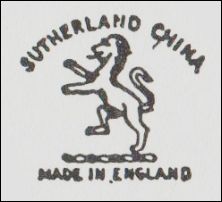 Sutherland China England rampant lion 1936+ this
mark was continued by the successors |
|
1912-41 |
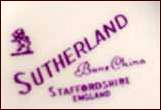
mark with rampant lion c. 1936+ |
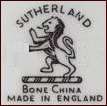 mark with rampant lion 1936+ |
|
Record
of a strike at the factories of J H Middleton and W Hudson Labour disputes of one kind or another have been unpleasantly frequent at Longton this year, but the most to be regretted was reserved for the last month. This refers to the dispute at the factories of J. H. Middleton & Co., Bagnall-street, and Mr. W. Hudson, Normacot-road, for the strike was certainly unjustifiable and unnecessary. It served no useful purpose whatever ; in fact, nobody gained a single point by it. On the other hand, it did a great deal of actual harm, and it certainly jeopardised the chances of an amicable settlement between the Masters’ Association and the Operatives’ Union on the question of prices. The amicable feeling between the two bodies was inevitably strained by the strike, but, fortunately, with the settlement of the dispute that was smoothed over. The actual strike came about in this way. On a particular pay-day the turners at the factory, which is known as Middleton & Co., but which is now owned by Mr. W. Hudson, announced that they had not received sufficient money. The manager demanded explanations, and the men informed him that the Manufacturers Association and the Operatives’ Union had agreed upon a price for turners, and the revised scale had already come into force. Mr. Hudson is not a member of the Manufacturers’ Association, and beyond a bare announcement in a newspaper knew nothing of the settlement. Neither the Manufacturers’ Association nor the Operatives’ Union had sent him a copy of the terms of the settlement. However, he was prepared to consider the matter, and an appointment was made for Mr. Sam Clowes, the men's organiser, to meet Mr. G. E. Barlow, one of the principals of the firm. An interview duly took place, and this, by the way, was the only interview, the only conference, the only attempt at a settlement before the men came out on strike. According to Mr. Barlow - and his account has never been contradicted - Mr. Clowes stated his demands, and Mr. Barlow at once agreed to them all. Mr. Clowes went off very well satisfied until he saw the turners, who promptly pointed out that they wore already getting more than the price agreed upon for Irish. Back went Mr. Clowes to Mr. Barlow, and the latter at once agreed that no prices should be reduced. The firm were willing to pay the Association prices, and in the cases where they were already paying in excess of those prices they would continue to do so. After that Mr. Clowes asked for another increase on the Irish and Mr. Barlow refused. Mr. Clowes went away, and without any more ado notices were sent in, and in due time the men and women came out on strike. As a matter of fact, the question of prices paid to the turners at the Normacot-road works had never been discussed, but that is a union point. At any rate, the whole of the operatives at both factories ceased work, and posted pickets at the gates. The firm calmly set to work to overhaul all the machinery, to carry out repairs, and so on. For a week the factories remained idle. The men held meetings, at which speeches more vigorous than discreet were made, and the firm stuck to the position which they had taken up from the first. At the end of a week another conference was arranged between Mr. Barlow, and Mr. Clowes and Mr. Lovatt of the Operatives’ Union. A settlement was speedily arrived at, and Mr. Clowes and Mr. Lovatt signed a statement of the terms, which included a clause to the effect that the terms were identical with those which the firm were agreed to accept in the first place. It does seem a very great pity that the misunderstanding— for misunderstanding of some kind there must have been— was not cleared away without all the unnecessary trouble and friction of a strike.
|
Questions, comments, contributions? email: Steve Birks